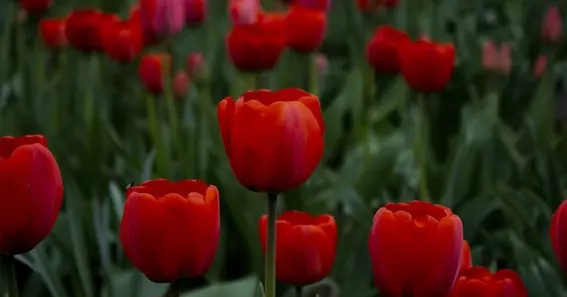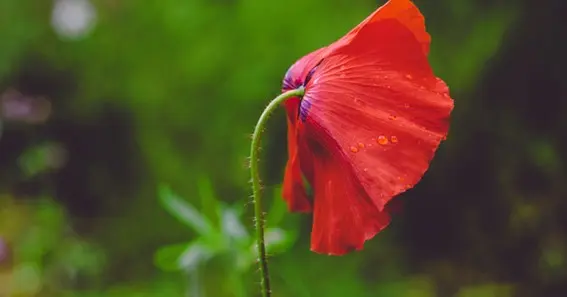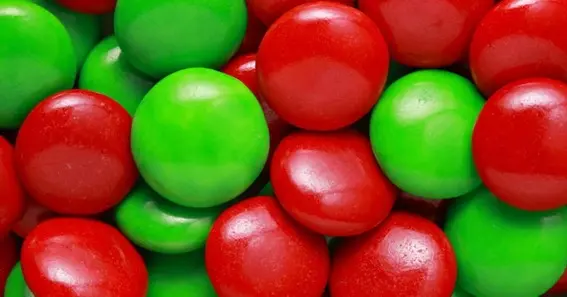What is the opposite of red? The opposite of red is green. From a colour wheel point of view, green is usually the colour right next to red. But the difference between red and green is more than just a colour difference; it also has meanings, feelings, and even connections to elements. Forge ahead on reading this post about what is the opposite of red for a healthier understanding of this subject.
What Is The Opposite Of Red?
The opposite of red is green on the colour wheel. When put next to each other, red and green make a solid visual difference because they are complementary colours. While red makes people feel intense feelings like passion and anger, green makes people think of peace and growth. This conflict isn’t just about colours; it has cultural, social, and symbolic aspects. The warmth of red and the coolness of green create a lively mix of colours that have different meanings.
In the preceding paragraph, what is the opposite of red readers will get a brief idea about this topic.
Why Is Green Thought To Be The Opposite Of Red?

Explore the complex way that colours interact as we examine why green is the colour that best goes with red. Explore the contrast between the calm coolness of green and the fiery intensity of red to learn more about how these two colours work together in art and our minds.
Green Complementary Hue
Unlike red, an intense primary colour, green is a secondary colour made when yellow and blue pigments mix in a balanced way. This relationship of opposites is a basic idea in colour theory. It shows how the colours in the spectrum interact and balance each other. The fact that green comprises two primary colours shows how complex it is and is the opposite of red’s bright intensity.
Tertiary Shades Of Green
The complexity of green shines through when we move past the primary and secondary colours and into the realm of tertiary shades. In this range, colours like blue-green and yellow-green come to life, each showing the depth and versatility of green. The slight differences between these colours help us understand how green opposes red and can represent many different feelings and thoughts.
Keep going downward in this post on what is the opposite of red to know more about the topic.
Coolness Of Green
When it comes to how people feel and act, the colour green makes them feel relaxed, peaceful, and calm. Red is often associated with fire and desire, but green makes people feel calm and in tune with nature. It’s the colour of lush woods, peaceful meadows, and peaceful landscapes, a nice change from its opposite colour’s wild energy.
Optimism And Prosperity
Green’s meaning goes beyond looks; it also involves hope and wealth. Its connection to money, growth, and plenty shows that people naturally want to move forward and succeed. From lush fields to booming economies, green represents the hope of a good future. This is different from red, which is often linked with intense urgency.
Nature’s Palette
Green is the colour of nature, representing life, renewal, and natural balance. It’s the colour of fresh starts, lush greenery, and the circle of life. Conversely, red may represent danger, haste, or basic instincts, showing how opposite forces work in nature.
Enigmatic Green Of Envy
Even though green is usually associated with good things, it can also be linked to bad things, like hate and jealousy. This contrast shows how feelings and colour meanings are intricately connected and how green can simultaneously make people feel admiration and anger. The word “green with envy” emphasises how deeply this feeling goes, where the shadows of unhappiness taint the lushness of green.
Traffic Signals And Symbolism
In today’s world, green means “go,” while red always means “stop.” This contrast brings out the fundamental tension between movement and restraint, which shows how people are always trying to figure out how to live a whole life. From traffic lights to crosswalks for pedestrians, green is a sign of hope and growth that helps us move forward.
Religious Symbolism
Symbolically, green and red are very important in many religions because they each represent essential parts of the human experience. In Christianity, red may stand for hellfire, sin, and God’s anger, while green represents the lush landscapes of heaven, which offer comfort, healing, and salvation for all time. For example, the sharp difference between hell and heaven shows how powerful colour symbols can be in religious stories.

Conclusion
Finally, the reader would have got their answer after reading this post on what is the opposite of red. By looking at the difference between red and green, we can see many different feelings, symbols, and cultural ideas. These colours affect our lives in many complex ways, from primary and secondary relationships to emotional connections. This changing connection helps us learn more about colour psychology and how colours affect how we see and show ourselves.
FAQ
Why Is Green Thought To Be The Opposite Of Red?
On the colour wheel, green is next to red, which makes a difference between the two colours. This contrast brings out their opposite places on the colour spectrum and the different feelings they evoke.
How Does Green Make You Feel Compared To Red?
Red is often linked to anger, emotion, and intensity, while green is often linked to peace, happiness, and wealth. These emotional connections explain their different roles in art, society, and psychology.
How Does Green Represent Nature Differently From Red?
Green is linked to nature, growth, and newness, while red is connected to danger, fire, and damage. This symbolic opposition shows different ideas about life, energy, and the natural world.
What Historical Importance Does Red And Green As Opposites Have?
In mediaeval mythology, green stood for water, while red stood for fire. This background information helps us understand what they mean symbolically and how they are used in art, faith, and tradition.
What Does It Mean That Red And Green Are The Opposites In Culture?
Different societal beliefs and symbols give red and green different meanings, which is why they play various roles in art, literature, and tradition. These cultural meanings affect how we see and understand these colours in other situations, from artistic expressions to holiday parties.
Sources:
https://marketingaccesspass.com/what-is-the-opposite-color-of-red/
https://www.thesaurus.com/e/ways-to-say/what-is-the-opposite-of-red
https://www.thinktankscholar.com/pages/what-is-the-opposite-of-red










